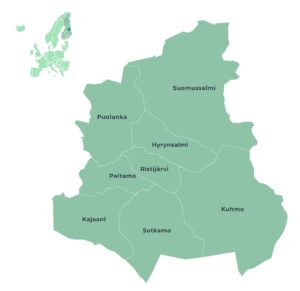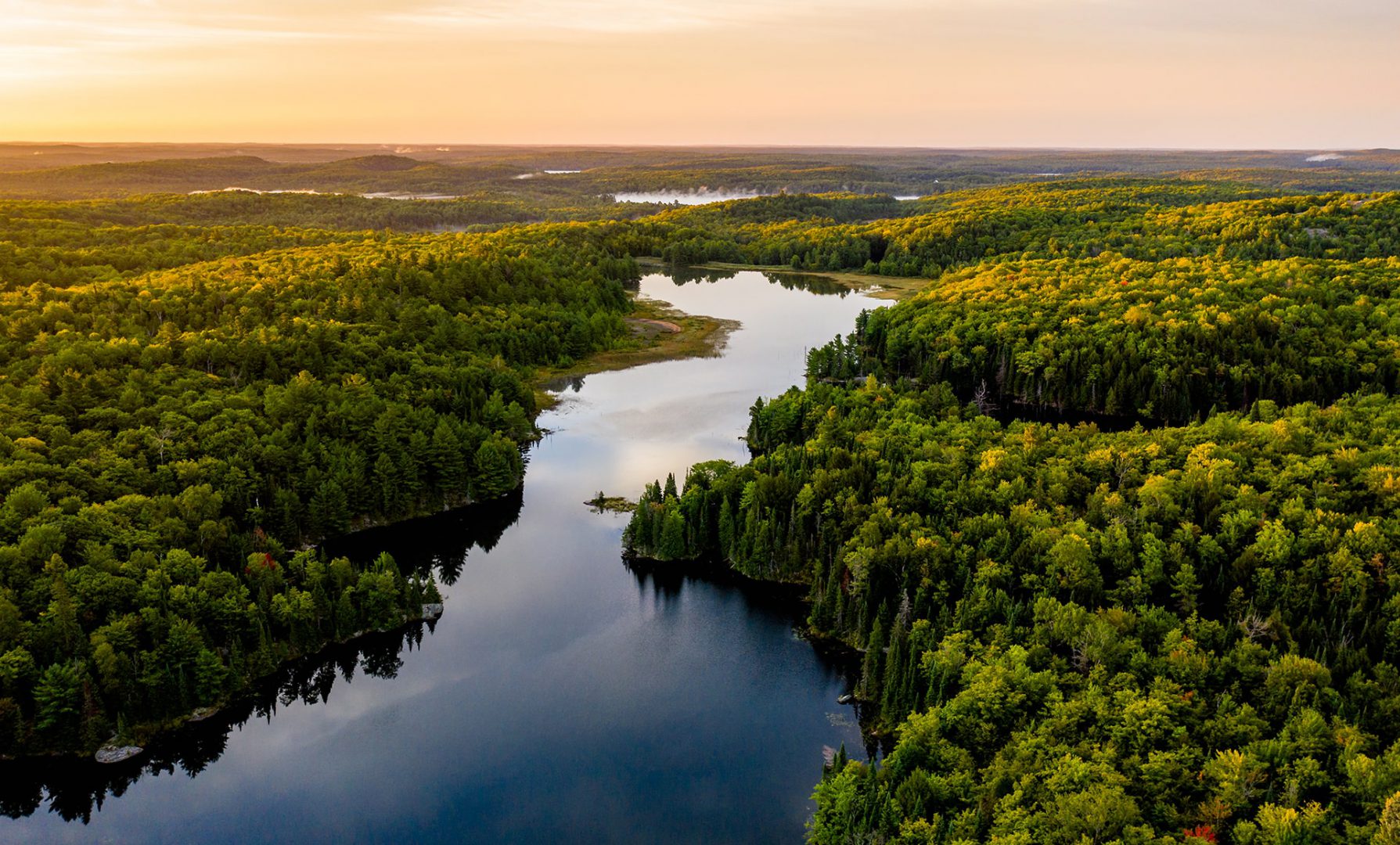The region of Kainuu is situated in Eastern Finland. Kainuu is formed of eight municipalities. The administrative capital is Kajaani. The regional population of Kainuu was 69 637 people in 2024 (preliminary statistics). Land area (22 687km²) of Kainuu equates in size to Belgium, but the population density is one of the lowest in Europe, with 3,5 persons per km². Kainuu is well-known for its forests, nature, measurement technology and good opportunities for sports. Read more at www.kainuu.fi!

Nature
The nature of Kainuu features forested hills, lakes and vast expanses of uninhabited forests at its most typical – 90% of the land area in Kainuu is forest. The climate is continental. Kainuu has distinct cold and warm seasons. At Kajaani’s latitude, the mean monthly temperatures range from -11°C (12°F) in January to 16°C (61°F) in July. Kainuu is one of the snowiest parts of Finland, with a 70-80 cm covering of snow during average winters.
Economics
The economy of Kainuu is driven by the lumber industry, which employs 8% of the workforce
in the region. The region also holds strengths in the areas of Supercomputing, Datacentres & AI application, Mining, Biofuels, and wide variety of tourism services.
Education
Kainuu offers opportunities for study and training both in upper secondary vocational education as well as in high-level postgraduate studies. Kajaani University of Applied Sciences (KAMK) is an international learning and development community which operates in its own compact campus area. KAMK uses internationalisation as a regional development tool. One profile that cuts through all operations at KAMK, smart solutions, is used to steer all activities. In addition to using technological solutions, smart solutions means the ability to do the right things right.
The schools of KAMK each have one focus area that supports this profile. The focus areas will enable the schools to increase their national status. Integrating the focus areas creates a readiness for international activities in line with the profile.
Transport infrastructure and accessibility
Kainuu is well connected to other parts of Finland by air routes. Kajaani airport is located 10 minute drive from the city centre, with daily flights (flight time 1 h 20 min) to Helsinki. The region can also be reached by using the nearby airports of Oulu, Kuopio or Kuusamo.
Extensive rail network in Finland and regular service make Kajaani easily reachable environmentally friendly by travelling by train. Finnish trails are operated by state company VR. Kainuu is also well connected by the the main road system. Highway 5 – the Finnish National road, one of the major roads between northern and southern Finland passes through Kajaani. Trains and busses to Oulu and Southern Finland depart many times per day.
